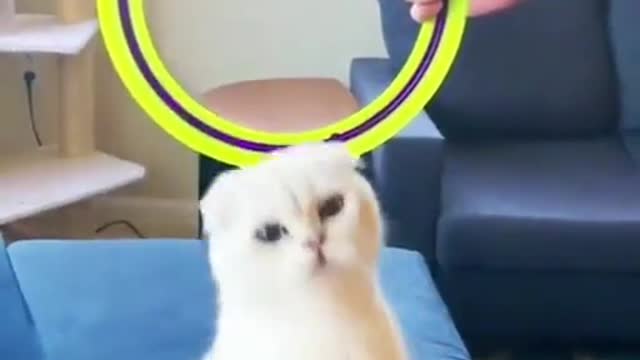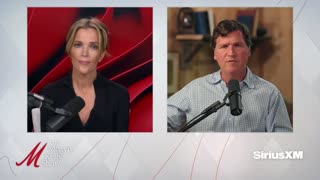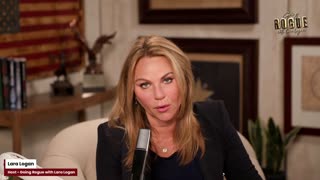Premium Only Content

| CAT CUTE VIDEO | BEAUTIFUL CAT | CAT PLAYING | ANIMAL JUMPING | CUTE CAT |
The cat (Felis catus) is a domestic species of a small carnivorous mammal.[1][2] It is the only domesticated species in the family Felidae and is often referred to as the domestic cat to distinguish it from the wild members of the family.[4] A cat can either be a house cat, a farm cat or a feral cat; the latter ranges freely and avoids human contact.[5] Domestic cats are valued by humans for companionship and their ability to kill rodents. About 60 cat breeds are recognized by various cat registries.[6]
The cat is similar in anatomy to the other felid species: it has a strong flexible body, quick reflexes, sharp teeth and retractable claws adapted to killing small prey. Its night vision and sense of smell are well developed. Cat communication includes vocalizations like meowing, purring, trilling, hissing, growling and grunting as well as cat-specific body language. A predator that is most active at dawn and dusk (crepuscular), the cat is a solitary hunter but a social species. It can hear sounds too faint or too high in frequency for human ears, such as those made by mice and other small mammals.[7] Cats also secrete and perceive pheromones.[8]
Female domestic cats can have kittens from spring to late autumn, with litter sizes often ranging from two to five kittens.[9] Domestic cats are bred and shown at events as registered pedigreed cats, a hobby known as cat fancy. Population control of cats may be effected by spaying and neutering, but their proliferation and the abandonment of pets has resulted in large numbers of feral cats worldwide, contributing to the extinction of entire bird, mammal, and reptile species.[10]
Cats were first domesticated in the Near East around 7500 BC.[11] It was long thought that cat domestication began in ancient Egypt, where cats were venerated from around 3100 BC.[12][13] As of 2021, there are an estimated 220 million owned and 480 million stray cats in the world.[14][15] As of 2017, the domestic cat was the second-most popular pet in the United States, with 95 million cats owned.[16][17][18] In the United Kingdom, 26% of adults have a cat with an estimated population of 10.9 million pet cats as of 2020.
The origin of the English word cat, Old English catt, is thought to be the Late Latin word cattus, which was first used at the beginning of the 6th century.[20] It was suggested that the word 'cattus' is derived from an Egyptian precursor of Coptic ϣⲁⲩ šau, "tomcat", or its feminine form suffixed with -t.[21] The Late Latin word may be derived from another Afro-Asiatic[22] or Nilo-Saharan language. The Nubian word kaddîska "wildcat" and Nobiin kadīs are possible sources or cognates.[23] The Nubian word may be a loan from Arabic قَطّ qaṭṭ ~ قِطّ qiṭṭ. It is "equally likely that the forms might derive from an ancient Germanic word, imported into Latin and thence to Greek and to Syriac and Arabic".[24] The word may be derived from Germanic and Northern European languages, and ultimately be borrowed from Uralic, cf. Northern Sami gáđfi, "female stoat", and Hungarian hölgy, "lady, female stoat"; from Proto-Uralic *käďwä, "female (of a furred animal)".[25]
The English puss, extended as pussy and pussycat, is attested from the 16th century and may have been introduced from Dutch poes or from Low German puuskatte, related to Swedish kattepus, or Norwegian pus, pusekatt. Similar forms exist in Lithuanian puižė and Irish puisín or puiscín. The etymology of this word is unknown, but it may have simply arisen from a sound used to attract a cat.[26][27]
A male cat is called a tom or tomcat[28] (or a gib,[29] if neutered). An unspayed female is called a queen,[30] especially in a cat-breeding context. A juvenile cat is referred to as a kitten. In Early Modern English, the word kitten was interchangeable with the now-obsolete word catling.[31] A group of cats can be referred to as a clowder or a glaring.[32]
-
 1:08:42
1:08:42
Roseanne Barr
6 hours agoFor Charlie…| The Roseanne Barr Podcast #115
133K100 -
 12:07
12:07
TundraTactical
2 hours agoWhats The Deal With New Guns In 2025
4.44K -
 LIVE
LIVE
Wayne Allyn Root | WAR Zone
5 hours agoWAR Zone LIVE | 12 SEPTEMBER 2025
243 watching -
 1:05:02
1:05:02
vivafrei
5 hours agoCharlie Kirk Assassin ARRESTED! Universal Ostrich Farms UPDATE! And More!
119K175 -
 1:44:36
1:44:36
Megyn Kelly
1 day agoRemembering Charlie Kirk, with Tucker Carlson, Donald Trump Jr., and Benny Johnson
65.4K127 -
 9:40
9:40
Lara Logan
3 hours agoHonoring Charlie Kirk - Going Rogue with Lara Logan - LIVE
44.6K43 -
 3:03:45
3:03:45
The Charlie Kirk Show
7 hours agoCharlie Kirk: A Life of Faith, A Legacy That Endures
471K426 -
 3:58:08
3:58:08
The Rubin Report
8 hours agoCharlie Kirk’s Best Moments on The Rubin Report
82.1K27 -
 UPCOMING
UPCOMING
FomoTV
19 hours ago🕯 Charlie Kick Assassinated — Radical Campus Rhetoric 🚨 Schools Should Be Held Accountable | Fomocast 09.12.25
26.9K3 -
 3:08:36
3:08:36
Right Side Broadcasting Network
8 hours agoLIVE REPLAY: Latest News from the Trump White House - 9/12/25
83.4K24